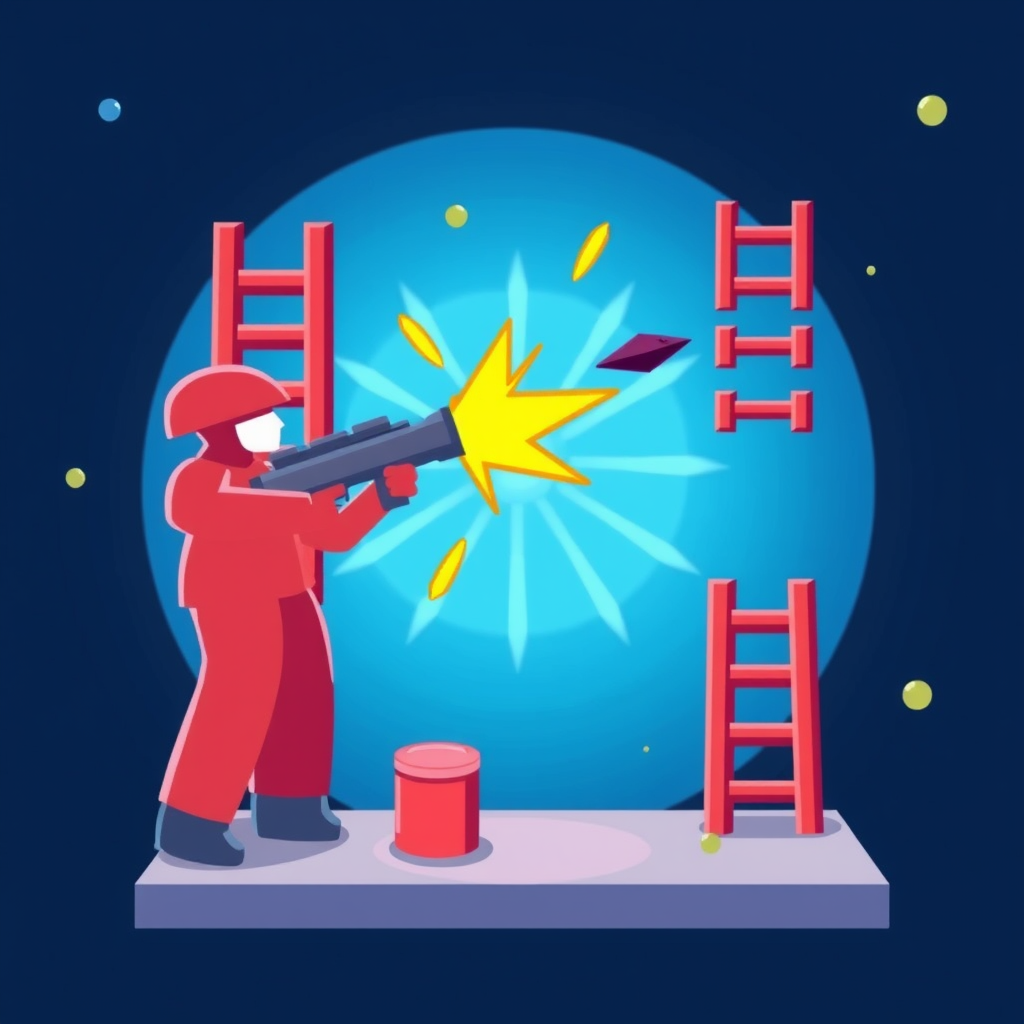
Shooter Games: The Competitive Arena
A shooter game—whether first-person, third-person, or arcade—centers around sharp reflexes, strategic positioning, and consistent aim. As the genre evolves, so do its “win more” tricks: angle peeking, tactical grenades, and map control are now baseline skills for anyone chasing leaderboard spots.
For many, shooter games are more than entertainment: they’re a mental sport with a high skill ceiling. Knowing the map, predicting enemy patterns, and adjusting sensitivity or field of view empowers you to move from casual to ranked lobbies confidently.
Shoots and Ladders Game vs. Shooting Games
The Shoots and Ladders game (often spelled “Chutes”) is a classic that contrasts with electronic shooters by emphasizing chance over skill. In shooter games, victory depends more on practice and learned mechanics.
But there are surprising similarities: positional awareness matters in both, and both require adapting to unpredictable situations. Where Shoots and Ladders offers the suspense of random outcomes, shooter games demand mastery of recoil patterns, loadouts, and timing windows for ultimate consistency.
Pro Tricks to Win More
- Crosshair Placement: Always aim at head/chest level while rounding corners to minimize reaction time.
- Peeker’s Advantage: In online games, move predictively; aggressive peeking can sometimes let you see opponents before they see you (due to netcode lag).
- Pre-firing: Anticipate enemy positions and begin shooting slightly before you see them if you have reliable intel.
- Movement Cues: Use crouch-jumping or ADAD spam (strafing side to side) to throw off enemy aim, especially in 1v1 duels.
- Sound Management: Wear headphones—audio cues like footsteps, reloads, or dropped objects give you intel not shown on the mini-map.
Building a Winning Mindset
Much like the patience required in Shoots and Ladders, the best shooter players avoid tilt after losses. Treat each round as data: what did your opponent do better? Rewatch replays or use in-game death cams to tweak strategy iteratively.
Build AI Games on Jabali
- No-code creation: Turn a simple prompt into a playable game in minutes, no coding or art background needed.
- Genre jumpstart: Launch fast with templates for maze shooters, dungeon crawlers, character sims, interactive stories and much more.
- Tweak everything: Upload assets, music, change character personalities and much more.
- Instant playtesting: One click to test, iterate, and balance! What you change is what you play.
- One-link sharing: Share a web link that works on desktop and mobile—no installs, just play.
- Creator-first: Great for solo devs, writers, educators, and studios prototyping new ideas quickly.
FAQs
Q: Is every shooter game purely skill-based?
A: Most competitive shooters heavily reward skill, though there’s always a small luck element due to spawns or netcode.
Q: Can casual board games like Shoots and Ladders teach shooter strategy?
A: Indirectly—they reinforce patience, adapting to setbacks, and managing friendly rivalry!
Q: What’s one habit that separates high-rank shooter players?
A: Consistent warmup routines—target tracking, flick aim drills, and reviewing matchups before competitive play.